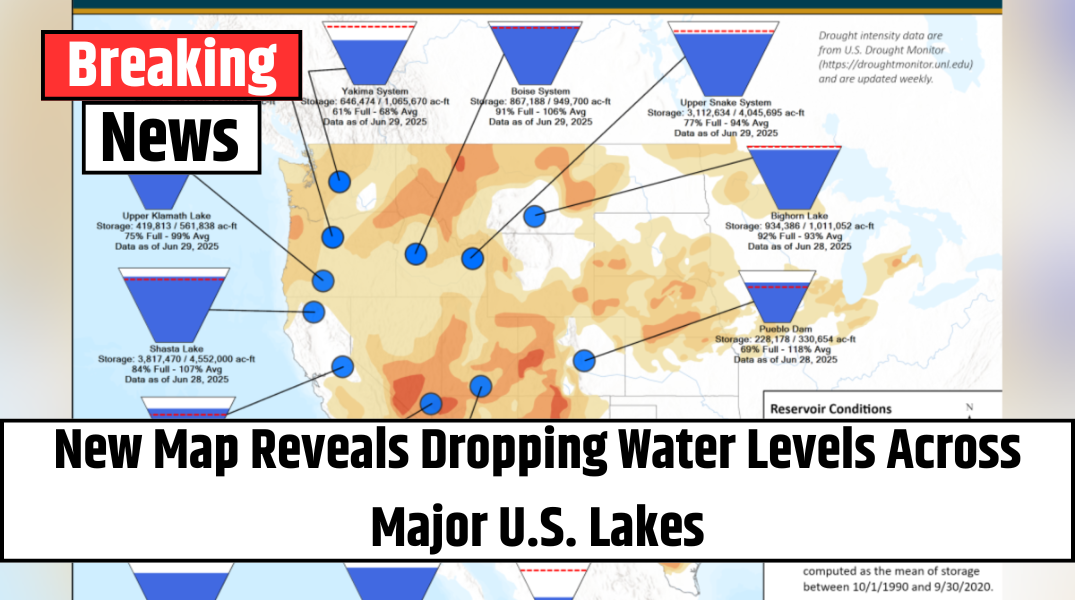Water levels at some of the country’s most important reservoirs have dipped significantly below seasonal averages, sparking fresh concerns about long-term water security in the western United States. Recent figures released by the U.S. Bureau of Reclamation (USBR) highlight the growing strain on vital water sources like Lake Mead and Lake Powell.
As of June 29, Lake Mead—America’s largest reservoir by volume—was sitting at just 31% of its full capacity, storing a little over 8 million acre-feet of water. That level represents only 52% of the reservoir’s average storage for the same date based on historical data collected between 1990 and 2020.
Why This Matters
Lake Mead and Lake Powell are linchpins in the U.S. water system, with a combined capacity of 50 million acre-feet. These reservoirs supply water to millions of people, support agricultural irrigation across multiple states, and generate hydroelectric power. Continued declines could have serious consequences for city water systems, farming operations, and energy production.
Also Read – July 4 Lake Closures Alert: Check If Your Favorite Spot Is Impacted
Lake Powell, located along the Colorado River between Utah and Arizona, was reported at 32% of its full capacity on June 29. That equates to just 49% of its typical storage for this time of year, according to USBR figures.
A Stark Contrast in California
In contrast to the declining levels at Mead and Powell, Shasta Lake in Northern California showed strong performance. It held over 3.8 million acre-feet of water—equivalent to 84% of its full storage potential—and came in about 7% above its average for this time of year. Shasta Lake’s capacity stands at approximately 4.55 million acre-feet.
The Bigger Picture
Comparing this year’s figures to prior years paints a worrisome picture. In 2020, Lake Mead stood at 41% full (68% of its average), and Lake Powell was at 53% (79% of its average). Rewind to the year 2000, and both reservoirs were nearly full—Mead at 90% and Powell at 89%.
Experts say the last two and a half decades have been marked by persistently low inflows and rising demand. Sharon Megdal, director of the University of Arizona Water Resources Research Center, explained to Newsweek that Lake Mead’s storage levels are a reflection of both reduced natural flows and greater outflows.
“For the past 25 years, annual inflows have been consistently below what we saw in the previous century,” she said. “At the same time, water deliveries to Lower Basin states and treaty obligations to Mexico have outpaced those inflows, steadily draining Lake Mead.”
Also Read – Beach Closures at Lake Michigan Due to Bacteria — Check Affected Areas
Looking Ahead
The seven states that rely on the Colorado River are currently engaged in negotiations aimed at establishing new water-sharing frameworks before 2026, when the current agreement expires. The outcomes of these discussions will be critical to managing water scarcity across the West.
In the meantime, reservoir levels continue to reflect the urgent need for long-term solutions in the face of changing climate patterns and increasing water demands.












